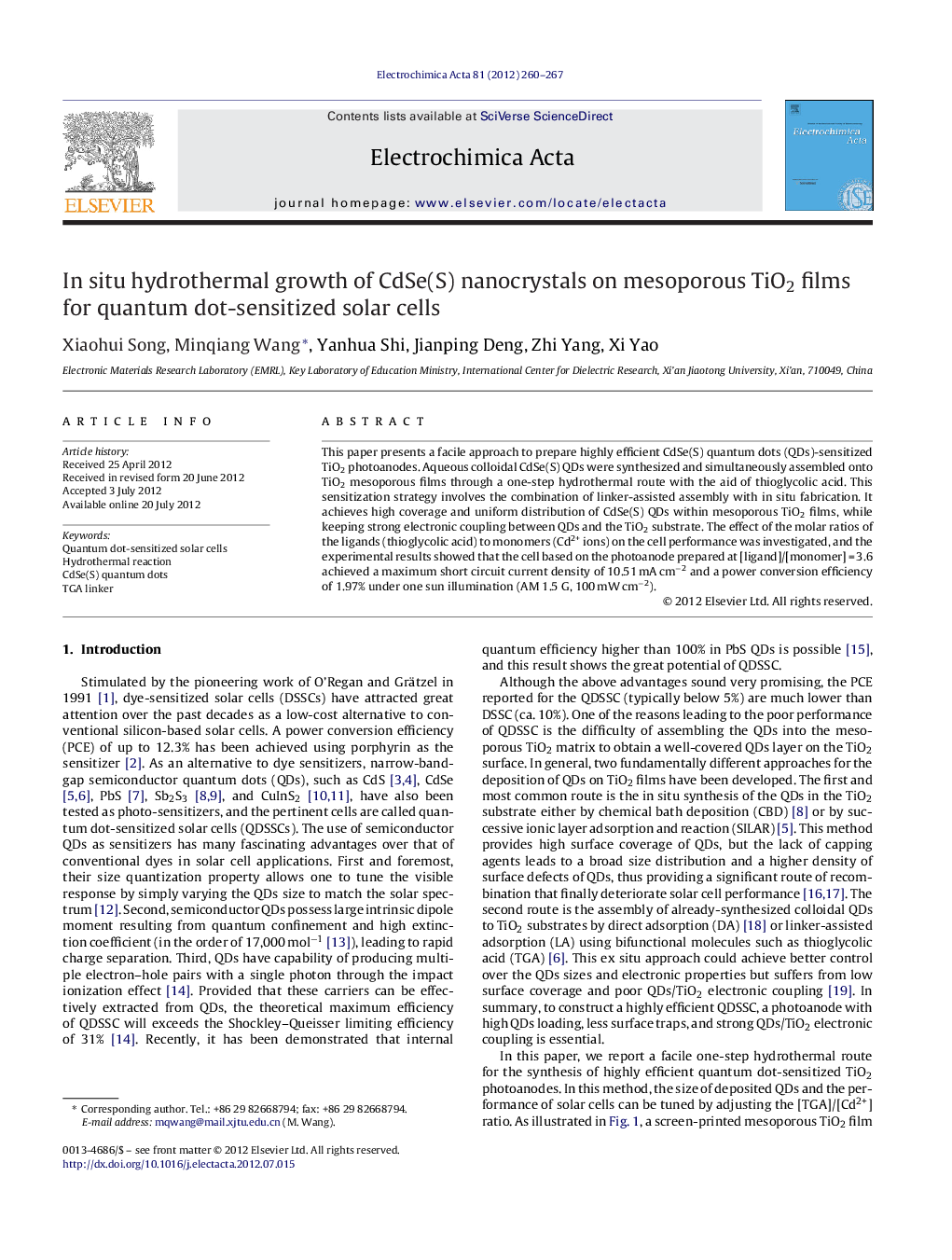| Article ID | Journal | Published Year | Pages | File Type |
|---|---|---|---|---|
| 188164 | Electrochimica Acta | 2012 | 8 Pages |
This paper presents a facile approach to prepare highly efficient CdSe(S) quantum dots (QDs)-sensitized TiO2 photoanodes. Aqueous colloidal CdSe(S) QDs were synthesized and simultaneously assembled onto TiO2 mesoporous films through a one-step hydrothermal route with the aid of thioglycolic acid. This sensitization strategy involves the combination of linker-assisted assembly with in situ fabrication. It achieves high coverage and uniform distribution of CdSe(S) QDs within mesoporous TiO2 films, while keeping strong electronic coupling between QDs and the TiO2 substrate. The effect of the molar ratios of the ligands (thioglycolic acid) to monomers (Cd2+ ions) on the cell performance was investigated, and the experimental results showed that the cell based on the photoanode prepared at [ligand]/[monomer] = 3.6 achieved a maximum short circuit current density of 10.51 mA cm−2 and a power conversion efficiency of 1.97% under one sun illumination (AM 1.5 G, 100 mW cm−2).
Graphical abstractSchematic illustration of the fabrication process of the CdSe(S) QDs sensitized TiO2 photoanodes using hydrothermal method.Figure optionsDownload full-size imageDownload as PowerPoint slideHighlights► Aqueous CdSe(S) quantum dots were assembled into the TiO2 film via a one-step hydrothermal route. ► This method achieves high loading and uniform distribution of quantum dots within TiO2 films. ► The photovoltaic performance can be optimized by adjusting the [TGA]/[Cd2+] molar ratio. ► The cell fabricated with this method achieves a maximum PCE of 1.97%.
